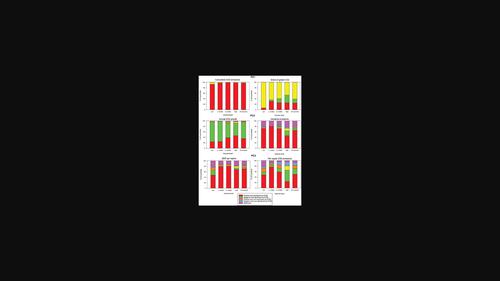当前位置:
X-MOL 学术
›
Glob. Chall.
›
论文详情
Our official English website, www.x-mol.net, welcomes your feedback! (Note: you will need to create a separate account there.)
A Preliminary Assessment of Global CO2: Spatial Patterns, Temporal Trends, and Policy Implications
Global Challenges ( IF 4.9 ) Pub Date : 2023-11-16 , DOI: 10.1002/gch2.202300184 Ahmed M. Ei Kenawy 1 , Talal Al‐Awadhi 2 , Meshal Abdullah 2 , Rana Jawarneh 3 , Ammar Abulibdeh 3
Global Challenges ( IF 4.9 ) Pub Date : 2023-11-16 , DOI: 10.1002/gch2.202300184 Ahmed M. Ei Kenawy 1 , Talal Al‐Awadhi 2 , Meshal Abdullah 2 , Rana Jawarneh 3 , Ammar Abulibdeh 3
Affiliation

|
This study offers a comprehensive analysis of the distribution, evolution, and driving factors of CO2 emissions from 1990 to 2016 at multiple spatial scales. Utilizing 26 indicators encompassing various facets of CO2 emissions, it is employed principal component analysis (PCA) and empirical orthogonal functions (EOFs) to identify the dominant characteristics of global CO2 emissions. This model retained three core components, accounting for 93% of the global CO2 variation, reflecting emission trajectories and associated economic metrics, such as Gross domestic product (GDP). The analysis differentiated the effects of these components based on countries' economic standings. Using a novel aggregated index, significant national contributors to global CO2 emissions are pinpointed. Notably, the leading contributors are found among developed nations (e.g., the United States, Canada, Japan), Gulf states (e.g., Saudi Arabia, Qatar), and emerging economies (e.g., China, Brazil, Mexico). Furthermore, these results highlight that shifts in global CO2 emissions over the past 30 years are predominantly influenced by factors like industrial emissions and GDP. Results also demonstrate a distinct relationship between a country's CO2 emissions and its physical and socioeconomic factors. Specifically, the nation's coastline length, population density in coastal regions, and the diversity of its climatic conditions significantly influence its carbon footprint.
更新日期:2023-11-16



























 京公网安备 11010802027423号
京公网安备 11010802027423号